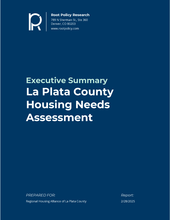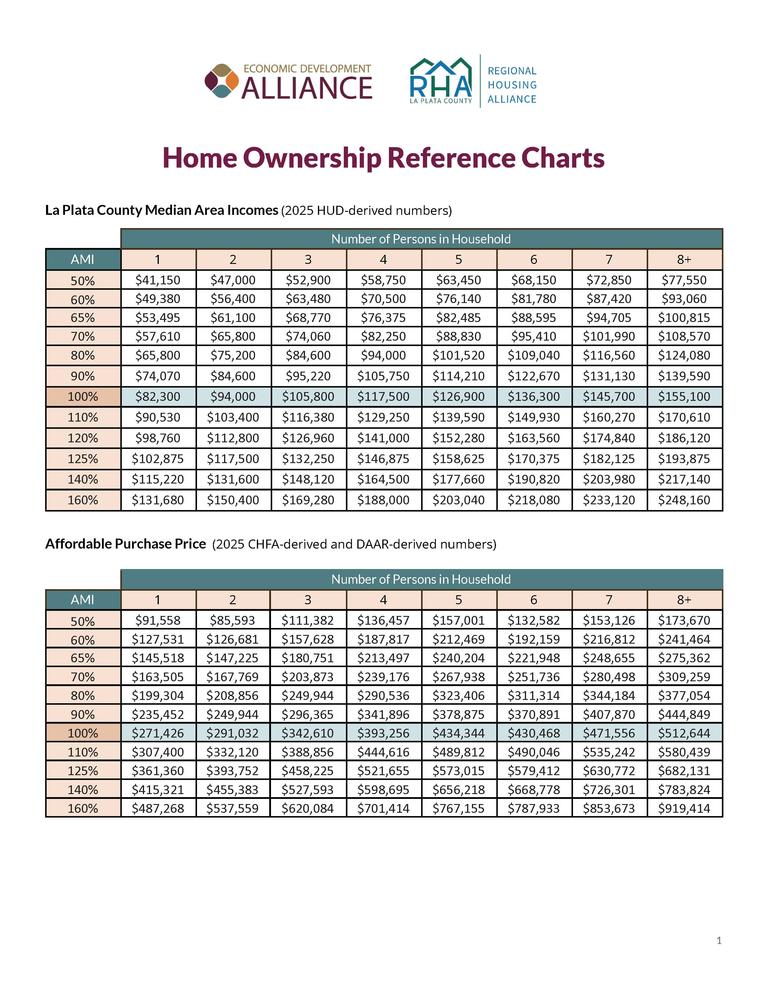La Plata County Affordable Housing Resources
NEW! Mobile Home Park (MHP) Preservation Network
According to MHP Preservation Network, approximately 100,000 Coloradans live in mobile home. The state has 760 registered mobile home parks with 57,475 lots. In recent years, the value of mobile home parks as affordable housing, especially for workers, has become more apparent than ever. Learn more about the MHP Preservation Network, their work, and review their resources on their website: https://mhpnetwork.org/
2024 Housing Needs Assessment
The Housing Needs Assessment (HNA) was commissioned by the Regional Housing Alliance of La Plata County (RHA) to better understand housing needs in La Plata County, including market changes since the 2020 regional assessment.
La Plata Housing Needs Assessment (published February 2025)
2024 Area Median Income Reference Charts
The 2024 AMI reference chart is a reference tool for developing affordable housing in our community. Area Median Income (AMI) accounts for the typical income in a specific housing market and compares needs across markets/regions.
PDF VERSION HERE
Affordable Housing FAQs
What is Affordable Housing?
- Standard Definition of Affordable Housing –Households pay no more than 30% of their income on housing costs
- When housing costs exceed 30% of income = housing cost burdened
- When housing costs exceed 50% of income = severely housing cost burdened
- Affordable Housing 101
What is Area Median Income (AMI)?
- Area Median Income (AMI) accounts for the typical income in a specific housing market and compares needs across markets/regions.
What is Gap Funding?
- The rents/mortgages that low- and moderate-income households can afford to pay are often too low to cover the full costs of development property. The gap between the funding needed to develop and operate a property and the revenue available is called the affordable housing funding gap.
- To fill the gap, developers usually need help in the form of a subsidy. The subsidy most often comes from local, state, or the federal government, but it can also come from other sources.
- The Basics: How is Affordable Housing Funded?
What Types of Subsidies Are Used to Help Fill the Affordable Housing Funding Gap?
- Low Income Housing Tax Credits (LIHTC)
- Private Activity Bonds
- Federal Historic Tax Credit
- State Tax Credits
- State Historic Tax Credits
- Grants and other subsidies
- State grants, subsidies, energy funds, loan funds, and tax incentives
- Land donations
- HOME Investment Partnerships (HOME) Program
- Community Development Block Grant (CDBG) Program
- Deferred developer fees
- Federal Home Loan Banks (FHLBs)
- Affordable Housing Program (AHP)
- Local grants
- National Housing Trust Fund Foundations
What Does Ready to Proceed Mean?
- Readiness to Proceed is a technical term used to refer to a development project being read to receive a funding commitment. Although each funder can have slightly different requirements or information requests; there are several activities and documents that are standard for public funding applications.

